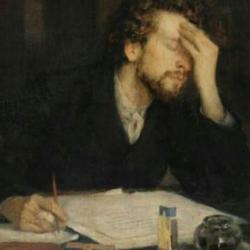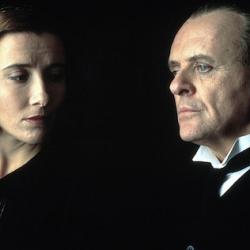A Tale of Two Cities was published in 1859, the 70th anniversary of the beginning of the original revolution, usually dated to the fall of the Bastille on July 14, 1789. This stood to Dickens’s time approximately as WW II does for us. My parents, and your grandparents, remember WW II, and the same would be true of Dickens’s contemporaries.
But the French revolution was in a sense even closer than that. The Napoleonic Wars had occupied Europe during the first decade and a half of the 19th century. Napoleon was in some ways the aftershock of the Revolution, and so the Revolution didn’t stop in a sense until 1815, when Dickens was three years old. In July 1830, Charles X of France was overthrown and a constitutional monarchy established with Louis Philippe of the house of Orleans on the throne. Again in 1848, there was a coordinated series of revolutions not only in France but throughout Europe, and even as far away as Brazil. So, revolution was in the air right up to the decade prior to Dickens’ writing his novel. (Theological earthquakes were beginning to stir as well: 1859 was also the year of Darwin’s Origin of Species .)
So, in Dickens’s contemporary setting, revolutionary movements of various sorts abroad in Europe. Marx was in his heyday, having written the Communist Manifesto in 1848, and socialist movements spread all over Europe. In England, most of the “workers’ movements” were comparatively peaceful, but some outbreaks of violence had raised the fear that a French-revolutionary type situation might develop in England, which had been spared the evils of the French Revolution. Dickens, we’ll see, believed that the French revolution erupted partly because the evils of the ancien regime were ignored, and saw similar dynamics at work in the English scene. The Industrial Revolution had confined many workers to drugery and injustice and ignorance, and the upper classes went on indifferently with their lives. This was the same situation that produced the French Revolution, and Dickens was writing a cautionary tale to warn his contemporaries of the potential evils that lay on the horizon. The book is not only a tale of two cities, but a tale of two revolutions – the French and the Industrial.
(The phrase “industrial revolution” was current in Dickens’s time. The notion of changes in social order produced by industrialization were already evident in the work of Owen, and even in poets like Blake and Wordsworth, and the phrase was used by French and English writers, including Engels, during the 1830s and 1840s.)
We all have some notion that the Revolution was partly the product of the ideas and writings of the Enlightenment. The Enlightenment was a diverse movement, but at its core, the shared mentality, was one of opposition and critique of traditional ways of thinking and the existing order of society. The Enlightenment was an intellectual and cultural movement that endured through the long eighteenth century, between Louis XIV and Napoleon. Castigated by its critics for its rationalism and rigorous logic-chopping, “The Enlightenment” is seen as the source for many of the evils of contemporary social, intellectual, and political life. But it’s a mistake to believe that there is only one Enlightenment; Descartes’s geometric rationalism, for example, came under severe criticism, and for many Enlightened thinkers feeling and sensation replaced reason as the grounds upon which all human understanding and activity were founded. Far from being committed to abstract reason and speculation, “one basic strain” recurs in nearly every Enlightenment writer, “namely a great disdain for abstract answers based on empty logic.” The Enlightenment was not so much an age of rationalism as an age of criticism, more an age of autonomy than an age of system-building. As Kant defined it, Enlightenment is man’s release from his self-incurred tutelage, his inability to make use of his understanding without direction from another.
Influence went in the other direction too: The French Revolution had an enormous impact on European thought and culture. The event was a turning point in the history of the Western soul. This is most obvious in the way the Revolution became a touchstone of political thought. The division of “conservative” and “liberal,” or left/right that we take for granted in contemporary politics is a product of the French Revolution. At one time, the two main political parties were “Tories” and “Whigs,” but at some point they adopted the Frenchified names, Conservatives and Liberals. Conservatives were defenders of the ancien regime, liberals were in favor of liberation from the oppressions of the past. The phrase “Prime Minister,” once the “First Lord of the Treasury,” is a title adopted from France. The French Revolution gave Europe a secular notion of unity that replaced the Christian unity of medieval Christendom. It spread nationalist sentiment throughout Europe, defining a nation not as a geographic subdivision of the church (as it had been for earlier generations) but as a people formed by a single esprit, mediated through a national literature. It introduced a modern idea of theatrical politics.
Its emphasis on clarity, logic, and order, expressed in a written Constitution as well as in the establishment of the metric system and experiments in the 10-day week, is a leading feature of modern political life. It extended civil rights to every inhabitant, even the Jews, one of the key marks of democratic governance ever since. The Enlightenment was haunted by what it saw as the irrational fanaticism of the wars of religion, but it soon proved, as Burke put it, that “a theory concerning government may become as much a cause of fanaticism as a dogma in religion.” It was the first modern “cultural revolution,” an effort not only to change government and constitutional arrangements, and certainly not an effort to preserve ancient liberties, but an effort to eradicate the past, and any Frenchmen who were foolish enough to continue to adhere to the past.
As Michael Burleigh has written, 1793 marked the “first occasion in history when an ‘anticlerical’ and self-styled ‘non-religious’ state embarked on a programme of mass murder that anticipated many twentieth-century horrors.” The French Revolution invented what Burleigh calls “gesture politics,” and invented the means that have been used to construct civil religions in regimes whose politics are quite different from the Revolutionaries – the use of ritual, spectacle, and art in fascist regimes, for instance.
One gets a sense of the enthusiasm generated by the Revolution from one Richard Price, a dissenting preacher, who preached a sermon on Nov 4, 1789, in defense of the French Revolution: “What an eventual period this is! I am thankful that I have lived to see it; and I could almost say, ‘Lord, now lettest thou thy servant depart in peace, for mine eyes have seen thy salvation . . . .I have lived to see 30 millions of people, indignant and resolute, spurning at slavery and demanding liberty with an irresistible voice; their king led in triumph, and an arbitrary monarch surrendering himself to his subjects . . . Be encouraged, all ye friends of freedom, and writers in its defense . . . Behold, the light you have struck out, after setting America free, reflected to France, and there kindled into a blaze that lays despotism in ashes, and warms and illuminates Europe.”
It was in response to this sermon that Edmund Burke published his treatise, “Reflections on the Revolution in France” (November 1790). Burke was contemptuous of Price, a preacher who knew little about the political movements t
hat he was praising, and he was horrified at the actions of the Revolutionaries. Burke condemned the French for revolting at the very time when the French crown was extending concessions: “The French have rebelled against a mild and lawful monarch, with more fury, outrage, and insult, than ever any people has been known to rise against the most illegal usurper, or the most sanguinary tyrant. Their resistance was made to concession; their revolt was from protection; their blow was aimed at an hand holding out graces, favours, and immunities.”
He found the whole affair “unnatural.” Once the initial “unnatural move is made, “The rest is in order. They have found their punishment in their success. Laws overturned; tribunals subverted; industry without vigour; commerce expiring; the revenue unpaid, yet the people impoverished; a church pillaged, and a state not relieved; civil and military anarchy made the constitution of the kingdom; everything human and divine sacrificed to the idol of public credit, and national bankruptcy the consequence.”
Burke denied that this was the “inevitable result of the desperate struggle of determined patriots, compelled to wade through blood and tumult, to the quiet shore of a tranquil and prosperous liberty.” Instead, the ruins of France are “sad but instructive monuments of rash and ignorance counsel in time of profound peace.” Burke’s essay sparked a wide-ranging controversy among English writers and thinkers. About 200 pamphlets, books, and essays were written in response to Burke, including essays by Thomas Paine and William Godwin.
But the effects of the Revolution were not confined to politics and political theorists. Poets, painters, sculptors, and novelists also framed a response to the Revolution. This was certainly true in France, but equally true in England, which eventually entered the conflict on the counter-Revolutionary side opposing Napoleon.
English literary critics in the early 19th century didn’t classify poets as “romantic” or “neoclassical” as we now do. They were more often classified in political terms, as revolutionaries. In 1802, Francis Jeffrey claimed that the “Lake Poets” were subversive and dangerous, and reminded him of the Enlightened phiosophes.
Sometimes the interest in the Revolution was overt, as in Coleridge’s “France: An Ode,” which traces a common trajectory in the English response to the Revolution. The first stanza describes his initial reactions to the revolution. Even when France went to war with England in 1793, he says that despite his love for England, he still “sang defeat/To all that braved the tyrant-quelling lance.” He “blessed the paeans of delivered France, and hung my head and wept at Britain’s name.” Even the terror doesn’t move him to abandon France. Horrified as he is, he still hopes that that France shall “compel the nations to be free/Till Love and Joy look round, and call the Earth their own.” Finally, in the fourth stanza, he realizes that he has betrayed Liberty in praising France. The French invasion of Switzerland in 1798 was the last straw. Wordsworth declares himself a patriot of France and traces his own sorrow over the failure of the high ideals of the Enlightenment in the Prelude, Books 9-11. Blake wrote a political tract in epic form, known as The French Revolution, which appears to be a response to Burke.
More subtly, romanticism owed something to the notion of “genius” that the revolution unleashed. Neoclassicism is in part a reaction to the dangers of revolutionary romanticism. Romanticism in certain respects follows the trajectory of the Revolution itself. Romanticism’s celebration of the self is paradoxically tied to a desire for total union with some whole – nature, another human being (total sexual union), the cosmos, God, something. This dynamic is the dynamic of the Revolution, beginning with a Declaration of the Rights of Man but finally collapsing into totalitarian terror.















